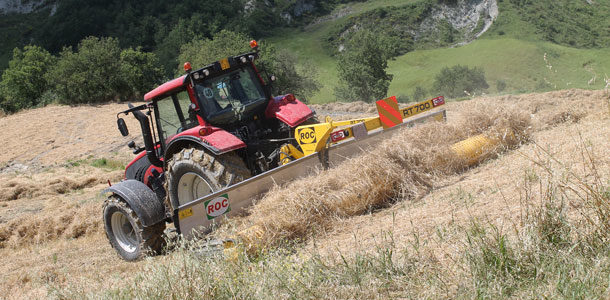The main difference, compared to traditional rakes, is represented by the pick-up system. The continuous merger lifts the crop in order to transport it on a conveyor belt; traditional rakes drag the crop on the ground up to the windrow. In fact, this model, unlike the other rakes, can be used on reverse drive or in front of a tractor (only while using it in the field). These differences lead to:
- Less stripping and contamination of the crop caused by the tractor’s wheels that tread on it. This model is the only continuous merger among the RT Series to have the possibility of being hooked in front of a tractor or to be used on reverse drive.
- Working facility in very little fields. In fact, it’s much easier to control the working area while using the merger in front of a tractor.
- Less hay stripping and higher quality. After sun-drying, the little alfalfa stalks become extremely fragile. If the crop is picked up using traditional rotary rakes, especially in the absence of dew, little stalks are more subject to break. With this system, the crop is lifted and put gently on the belt in order to be transported and deposited centrally without any damage.
- Lower product losses. In the presence of wheel tracks or holes, during crop dragging, traditional rakes tend to leave a part of the product on the ground. On the other hand, with a continuous merger, the crop is lifted on a belt and it’s not dragged on the ground.
- Less damages in growth. Under normal conditions, already two or three days after mowing, some kinds of products reveal a growth made up of small stalks with some leaves. Under these conditions, rotary rakes tend to break the little stalks, causing a delay in growth and therefore in mowing. FG
—From ROC SRL news release
PHOTO
The Continuous ROC Merger RT 700. Photo provided by ROC SRL.










